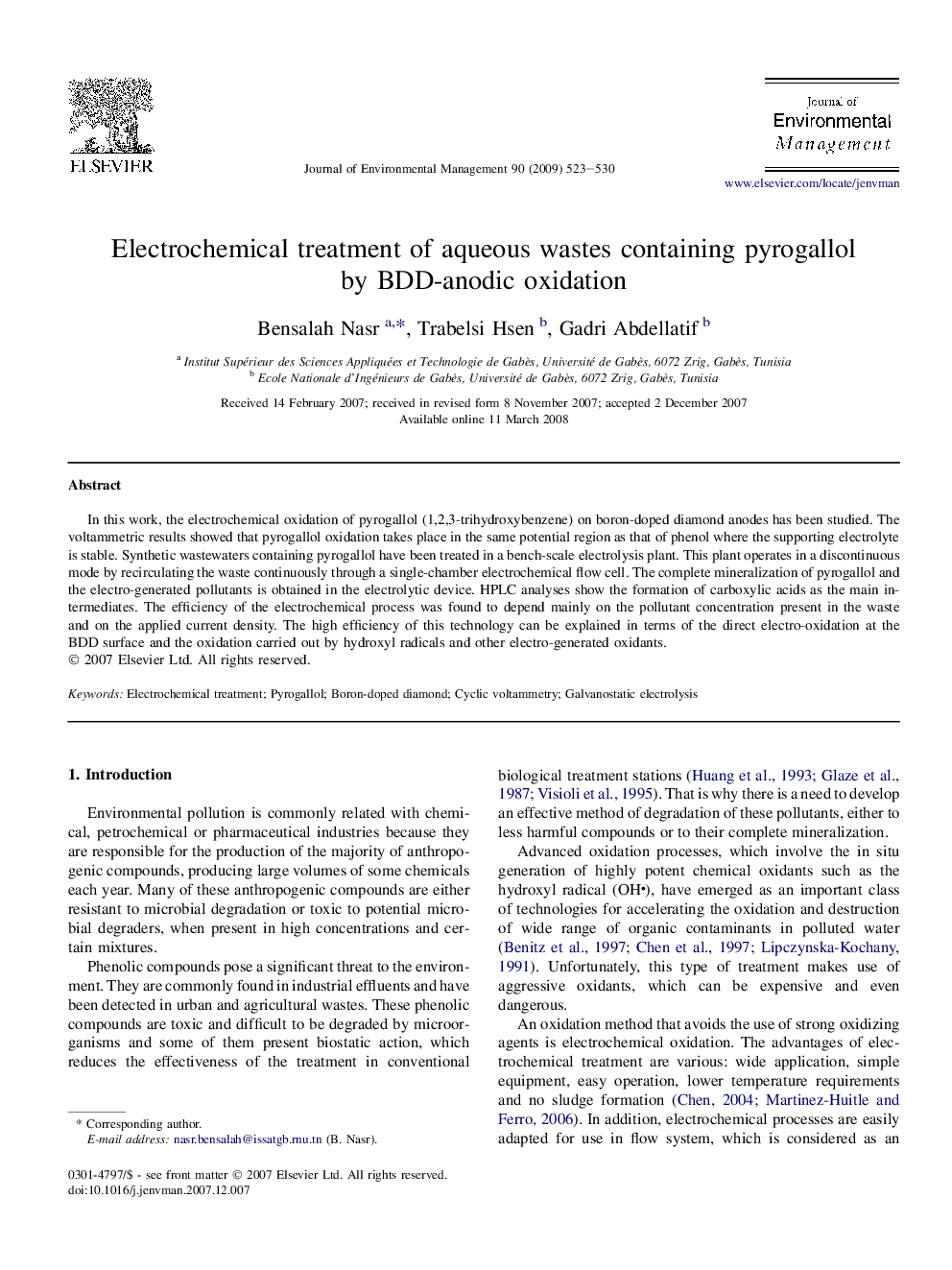| Article ID | Journal | Published Year | Pages | File Type |
|---|---|---|---|---|
| 1058120 | Journal of Environmental Management | 2009 | 8 Pages |
In this work, the electrochemical oxidation of pyrogallol (1,2,3-trihydroxybenzene) on boron-doped diamond anodes has been studied. The voltammetric results showed that pyrogallol oxidation takes place in the same potential region as that of phenol where the supporting electrolyte is stable. Synthetic wastewaters containing pyrogallol have been treated in a bench-scale electrolysis plant. This plant operates in a discontinuous mode by recirculating the waste continuously through a single-chamber electrochemical flow cell. The complete mineralization of pyrogallol and the electro-generated pollutants is obtained in the electrolytic device. HPLC analyses show the formation of carboxylic acids as the main intermediates. The efficiency of the electrochemical process was found to depend mainly on the pollutant concentration present in the waste and on the applied current density. The high efficiency of this technology can be explained in terms of the direct electro-oxidation at the BDD surface and the oxidation carried out by hydroxyl radicals and other electro-generated oxidants.
